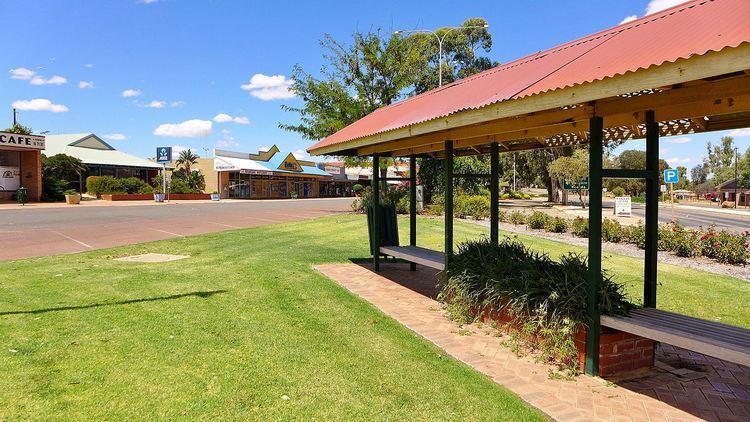Established 1911 Elevation 286 m (938 ft) Postal code 6603 | Postcode(s) 6603 Population 745 (2006 census) Local time Wednesday 6:56 PM | |
 | ||
LGA(s) Shire of Wongan-Ballidu Weather 26°C, Wind SW at 10 km/h, 24% Humidity Location 182 km (113 mi) NNE of Perth | ||
Wongan Hills is a town in the Shire of Wongan-Ballidu, in the Wheatbelt region of Western Australia. The town is approximately 182 km north of the state capital Perth, at an altitude of 286 metres.
Contents
Map of Wongan Hills WA 6603, Australia
The town is named for a nearby range of hills that are found to the north-west of the town, also named Wongan Hills, which was first recorded in 1836 by Surveyor General of Western Australia John Septimus Roe. As part of Easter celebrations in 2009, a 1.8-by-1.1-kilometre (1.1 by 0.7 mi) cross was laid out in a bare paddock using 460 half-tonne hay bales with the aid of GPS receivers.
The cross was set alight on Good Friday night and was the end of a pilgrimage conducted on Easter Saturday.
History
The area was settled by the 1900s, and in 1911 the town was gazetted and named after the range. "Wongan" is derived from the Indigenous Australian name "wangan-katta", "wanka" and "woongan". "Katta" is known to mean "hill", but the meaning of "wongan" is uncertain. It may be related to "kwongan", an indigenous word for sandplain, or "whispering", in which case "wongan katta" would mean "whispering hills" (katta is a word for hill).
In 1925 an agricultural research station was established about 5 km north of the town which assisted in the diversification and improvements in farm practices through the state. The area is a prosperous agricultural region with activities focused on sheep, grain and pig-farming.
Construction of a grain silo commenced in 1933 as part of the bulk handling scheme that had been introduced by the government and managed by Cooperative Bulk Handling.
In the early 1900s, poet Lilian Wooster Greaves lived with her family at Wongan Hills. Her book of poetry includes a number of prose and poetry items relating to living there at the time of the first world war.
